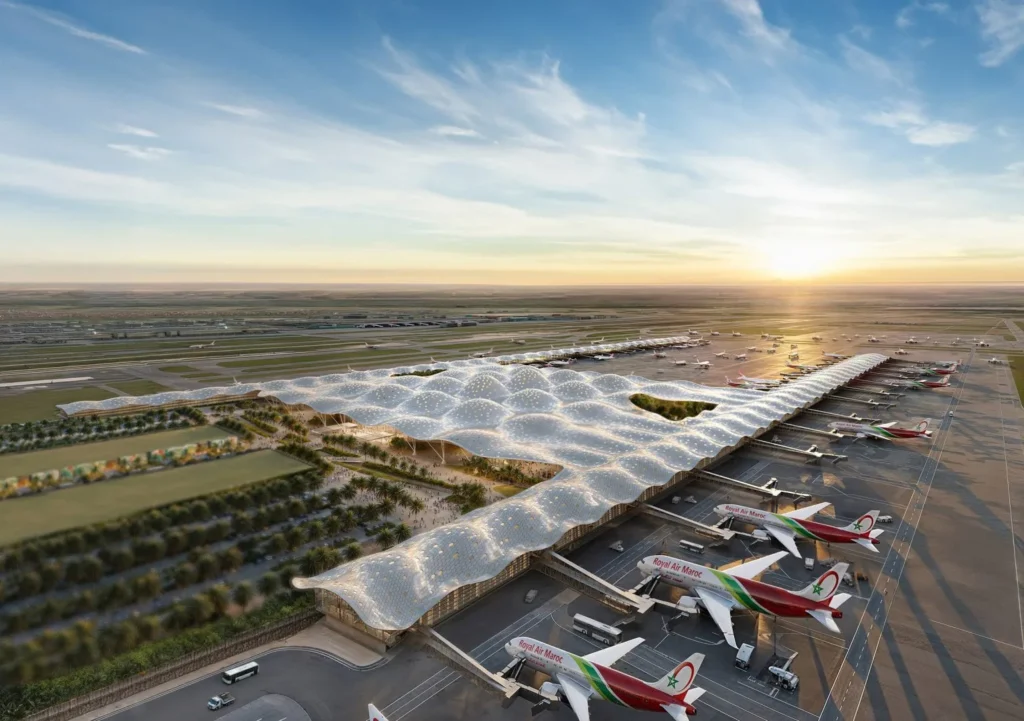Doha – Morocco’s aerospace industry has taken 11.2 billion US dollars into GDP and supported 856,000 jobs, as a new report by the International Air Transport Association (IATA) has shown.
The industry bodies greeted Morocco’s “Airports 2030 Strategy”, which aims to modernize the infrastructure and to strengthen the position of the country as a regional and global aviation center.
“In view of the critical and growing importance of aviation for the Morocco economy, the start of the” Airports 2030 Strategy Strategy “will have extensive and positive effects on the economic and social development of Morocco,” said Kamil al-Awadhi, IATA Regional Vice President for Africa and the Middle East.
According to the IATA report “Value of Air Transport to Morocco”, aviation contributes 7.9% to the country’s economy and has recorded growth of 68.1% in the past ten years.
The report emphasizes that 93% of the passengers flow from Moroccans Airports In 2023, 11.7 million people traveled to international goals.
It shows Europe as the largest international market Morocco, with around 10 million passengers (85% of total international traffic) departing for European goals.
Paris is located in the list of the most popular city goals in the city, which make up 2.02 million passengers or 17.3% of all international departures.
“It is no coincidence that the strategy of ‘Airports 2030’ ‘ aligned With Morocco, the co-moderator of the FIFA World Cup 2030. Morocco will be on the world stage, which is a great incentive to be ready to demonstrate the growing strength of Morocco as an aviation hub that connects Africa, Europe and North America, ”remarked Al-Awadhi.
The IATA proposed three important priorities to the Moroccan government to maximize the advantages of investments in the airport infrastructure:
Read too: IATA: Morocco’s aviation sector is an important economic driver
First, to ensure cost efficiency through fair and competitive fees, taxes and fees to promote connectivity while the country upgrades its infrastructure.
The report underlines the importance of cooperation with users and compliance with global best practices in order to avoid unnecessary financial burdens.
Second, the capacity structure is concentrated by investing in human resources in addition to the infrastructure. Iata emphasizes that qualified workers are of crucial importance to support airport moderation and to fulfill the expected growth.
Third, the implementation of intelligent consumer regulation instead of importing ineffective laws from Europe or the United States. IATA recommends the development of passenger law laws that reflect global best practices and industry standards.
The report also describes the connectivity indicators of Morocco and found that the country has 18 airports with commercial planned flights on 54 countries.
The International Air Connectivity Index from Morocco has risen by 36% and 63% with other regions since 2014.
In addition to the economic contributions, the report describes the social advantages of aviation growth in Morocco. The flight costs have become more accessible, with the average real flight prices decreasing by 28% between 2011 and 2023. The locals now have to work for about 15.8 days to afford a plane ticket.
In addition, Morocco 2023 acted 77,900 tons of air freight and positioned it as a 65th largest air freight market worldwide and supports the country’s import and export volumes.
The aviation sector employs 38,000 people in Morocco directly and generates 1.1 billion US dollars of economic output, which corresponds to 0.8% of the total GDP.
Airlines contribute 691.7 million US dollars to GDP, while they employ 11,800 people, while airports, air navigation service providers and civil production add 453.7 million dollars and employ 26,200 people.
The tourism supported by Aviation makes the greatest economic contribution, with the GDP 8.5 billion US dollars adding and employing 681,600 people. According to international tourists, local expenditure is an estimated 12.1 billion US dollars for the economy.





